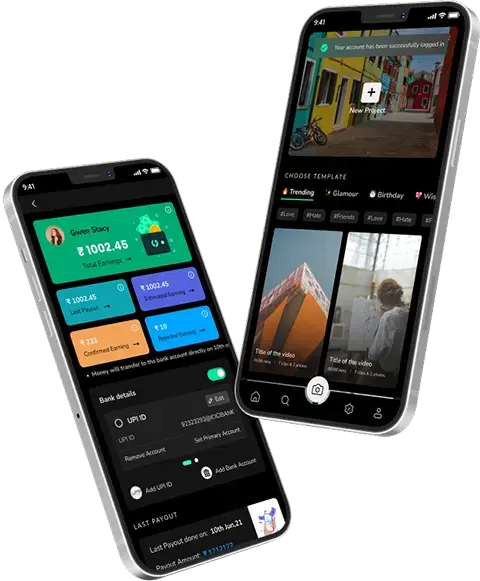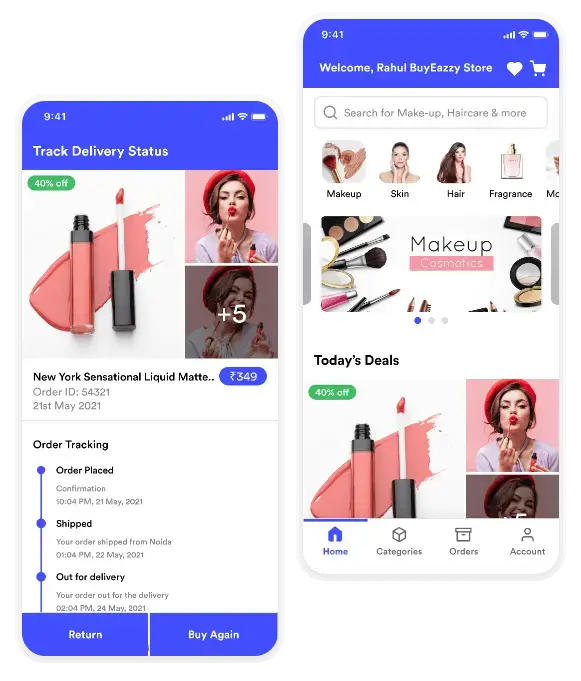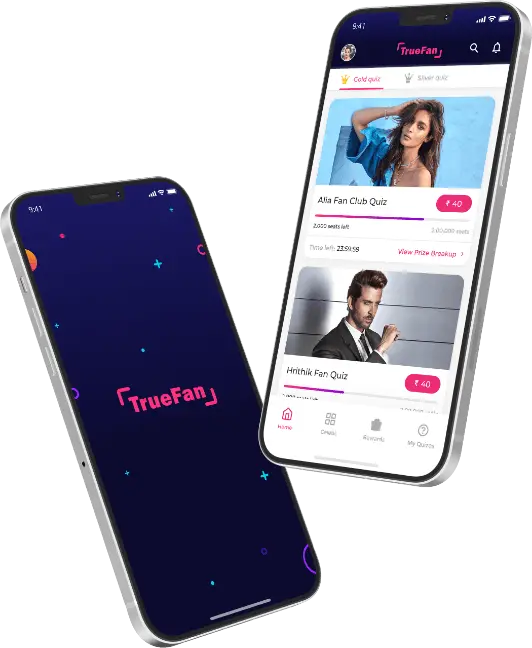Suppose you create your digital paradise and develop your 3D application or game. Or you create a successful marketplace for people who can shop within the virtual meta world.
The idea of the Metaverse is among the top concepts of the digital age. The Metaverse has transformed entertainment, gaming, real estate, and other fields.
In this emerging sector, metaverse platforms like Decentraland are the standard. Users can purchase or create digital assets like digital worlds, land, and parcels of land.
Smart contracts manage their business, and since it’s not centralized, the Metaverse uses blockchain on the Ethereum network. From improving virtual social networks to boosting economic activities on the ground, the Metaverse has an enormous opportunity for gaming and real estate companies.
However, creating the Decentraland metaverse platform demands understanding all its components, design, and development processes. You must partner with an experienced mobile app development company to handle the complexity of developing a metaverse platform like Decentraland.
This blog will discuss the costs of creating the Decentraland Metaverse, the components that make up metaverse platforms, and the benefits of creating your virtual world.
Decentraland: An Overview

The Modern Metaverse Decentraland is a decentralized virtual world built upon the Ethereum blockchain. It allows users to explore, interact with, and earn money from digital products. It was first introduced in 2017 and permits users to purchase and develop virtual land plots with its own digital currency, MANA. Ownership is made easier through smart contracts.
Decentraland lets owners create immersive experiences such as virtual gaming environments, virtual business events, and real property developments. This is why it is among the top transformative tools in real estate and gaming.
The decentralized design will ensure that users completely control the digital asset. This will create an evolving virtual economy in which commerce and creativity are merged. Of all the metaverse websites, Decentraland operates as a model for companies that want to invest in Decentraland’s metaverse platform to profit from the potential of virtual space.
How Does Decentraland Metaverse Work?
Decentraland is based on its Ethereum blockchain, which provides security for transactions and ownership of digital assets. Customers begin by purchasing MANA, Decentraland’s currency, which is typically acquired from cryptocurrency exchanges and then transferred into a digital wallet compatible with the platform. To enter the metaverse platform like Decentraland world, players create and personalize their avatars by selecting names, appearances, and clothing. This avatar acts as their identity and allows players to explore a variety of 3D settings by simply teleporting across portals to coordinates using an easy point-and-click system.
One of the main features of Decentraland is the possibility of buying LAND parcels representing virtual real property. Every piece of land is forever recorded by the blockchain, giving the users ownership rights to all lands. Land can be purchased directly through Decentraland or secondary markets with MANA. After acquiring the land, owners can enhance their property by incorporating structures, scenery, games, and other interactive elements using Decentraland’s development tools. Apart from individual designs, places for communal use, such as plazas, event venues, and even parks, promote interaction and socialization.
Why Should You Create Your Personalized Platform Like Decentraland Metaverse?

Making your version of a metaverse platform like Decentraland lets you create an entirely custom-built platform with features specifically tailored to your users, ensuring that users’ experience is unique. Here are a few reasons why you should consider creating your own Decentralized-inspired Metaverse
1. Customization and Control
When you create your metaverse, you control the entire metaverse, including options, user experience, and even design. You can modify the platform to fit the specific needs of your users or your business model.
2. Revenue Generation and Monetization
A decentralized virtual world provides numerous monetization options, such as selling virtual land using NFTs, game assets, and even a marketplace for players to trade in objects. Revenues can also be earned through transaction fees or premium content.
3. Scalability and Future-Proofing
As the owner of the structure and infrastructure in your universe, you are granted the option to grow and develop the platform as needed. This flexibility lets you adapt to the latest technological advancements and integrate cross-platform capabilities to keep your virtual world on the cutting edge.
4. Community Engagement and Retention
The creation of a vibrant virtual world allows users to be immersed in a variety of unique experiences. This helps build a solid, loyal community. Social interactions, virtual events, and user-generated content keep users engaged and active for longer durations.
5. Decentralization and Transparency
The use of blockchain technology will ensure that the ownership of your data and transactions in your metaverse is safe, transparent, and traceable. Decentralization can also help users gain control, providing them with control over their assets, which will increase trust and improve the long-term stability of your platform.
10 Essential Features of The Decentraland Metaverse
To provide a lively and exciting experience, Decentraland Metaverse is a collection of elements that improve the user’s interaction and creativity.

1. Virtual Real Estate
Users can purchase or sell digital land using NFTs. These parcels of land are permanent, and ownership is recorded through blockchain technology. Landowners can develop their virtual spaces by constructing experiences such as games, buildings, or even events.
2. Avatar Customization
Decentraland lets players build avatars with unique looks, such as outfits, accessories, and distinctive appearances. These avatars are fully interactive within this virtual environment.
3. 3D Interactive Environment
The platform provides an open, 3D environment based on physics that lets users explore various themed districts, connect with other gamers, and participate in a variety of activities, from attending virtual events to exploring secret locations.
4. Marketplace and MANA Currency
The built-in marketplace lets players exchange virtual items like land, wearables, and other digital assets using Decentraland’s cryptocurrency, MANA. It’s an integral component of the economy and allows quick transactions between participants.
5. Developer Tools
Metaverse platforms like Decentraland offer a variety of tools, including an SDK (Software Development Kit) that lets developers create interactive games, applications, and experiences for the platform. Simpler tools allow even people with no programming expertise to build virtual environments.
6. AI-Driven NPCs
Create AI-powered NPCs with dynamic personalities, tasks, and behavior. These could provide quests, information, or even personalized assistance, adjusting to the user’s preferences and changing as they interact.
7. Decentralized Governance System with Voting
Set up a governance structure where landowners and users can participate in platform-wide decision-making. This could affect policies regulating the virtual economy, event hosting, and platform updates and give the community complete control.
8. Cross-Platform Portability
Create a system that allows users to use their virtual avatars, assets, and currencies across various virtual platforms. This will allow seamless interaction across multiple metaverses, facilitating collaboration and extending users’ experiences beyond one platform.
9. Mixed Reality Integration
Users can combine their virtual and physical worlds via AR glasses or mobile devices. This brings virtual objects to the real world, creating experiences that blend two realities.
10. User-Created Ecosystems
Let players design and manage whole ecosystems, which allows for introducing fauna and flora within virtual environments. The ecosystems can respond dynamically to environmental changes, mimicking weather or resource management interactions.
Key Components in Metaverse Development
Numerous modern technologies that provide an immersive, seamless, safe virtual experience drive the metaverse. Blockchain technology, for instance, is fundamentally a source of decentralization, transparency, and security, as evident in Decentraland. It is an application that uses Ethereum’s Ethereum blockchain and smart contracts that allow the ownership and exchange of virtual assets like tokens, land, and digital goods.
The major component is virtual real estate, which lets users buy, build, and make cash from land parcels in the real property market. Property is being transformed into NFTs secured by blockchain.
Additionally, however, using 3D virtual spaces can increase users’ engagement by providing an actual setting for gaming, virtual offices, events, and entertainment. Artificial Intelligence services complement these experiences by utilizing the potential to create intelligent avatars, automated workflows, and customized content.
The metaverse uses NFTs and cryptocurrency to power its economy through digital and safe transactions and trading. For example, MANA is Decentraland’s native currency. The second aspect is linked with AR and VR technology since it’s impossible to create a real interactive, interactive environment that would let users move around and exchange messages with each other within virtual environments. These elements form the basis for creating new metaverse systems such as Decentraland.
The components facilitate the creation of metaverse platforms like Decentraland, which give companies the chance to invest in virtual worlds. Businesses can use blockchain, smart contracts, and artificial intelligence to build decentralized and engaging platforms that transform how we interact with technology.
Cost of Building a Metaverse Platform Like Decentraland

The cost of establishing a metaverse platform such as Decentraland depends on the technology platform, the developers’ knowledge, and the complexity of the functionality. Key components, such as integrating blockchain technology, which ranges between $30,000 and $150,000, ensure decentralization and safe ownership of virtual assets through smart contracts and token systems.
The costs for creating 3D virtual worlds to enhance the experience are the same: $50,000-$200,000, according to the design’s complexity level. Development costs are piled on by integrating elements that offer users an immersive experience with AR/VR. Users can create virtual real estate to sell and purchase the land in NFTs.
Its final cost depends on other elements like UI/UX design to create an intuitive user interface, ongoing security monitoring to safeguard NFTs and transactions on blockchains, and AI services to create smart avatars and automated workflows. The total cost of creating a metaverse-based platform is diverse, but businesses looking to implement this innovative technology can expect to reap the highest return on their investment.
Metaverse platform investments are long-term and highly rewarding, and they may change how industries are conducted, such as property, gaming, and even online shopping. Although this could lead to massive investments, planning by a well-established metaverse development business means that companies could ultimately create an immersive virtual environment that achieves its goals, entices, and draws attention to people.
Factors that Influence the Development cost of the Metaverse Platforms
The type of technology and user experience, design of interfaces, curation of content and creation, server architecture and scalability and security, compliance marketing and promotion, and more all play major aspects in influencing the development costs of Decentraland.
To comprehend it better, let’s discuss some of the most important aspects before deciding on full-scale development.

1. Type of Industries
In terms of metaverse development costs, the business for which the metaverse was developed is an important contributor to the end of Decentraland development costs. Metaverse in education, gaming, social media, and real estate is gaining popularity.
The game industry is one of the largest industries advancing the metaverse market. The cost of creating a virtual world for gaming depends on the complexity of the gaming application’s infrastructure and the game’s features, map pack levels, and multiplayer capabilities. We can conclude that the cost of creating gaming metaverses could be anywhere from $25,000 to $400,000.
Virtual space is also sold and bought, similar to real-world property. The metaverse is becoming widely accepted and utilized, and people are using it to purchase properties within the world of virtual reality through the use of digital currencies, NFT, and so on, as they wish to be an element of it. In the end, the cost of real properties in the metaverse is between $13,000 and $300,000.
Most industries are the most popular on social media. Therefore, getting these businesses to the metaverse will require enormous effort. The competitive edge for the metaverse could result from a heightened metaverse user experience and security and the overall metaverse design. However, establishing an online metaverse for social media can vary from $30k to $400,000.
2. Features
When it comes to basic features it’s not expensive; however, when it comes to advanced features, they dramatically increase the development costs by a significant amount. A few of the more advanced features include
- Allowing users to build their own avatars with many options, including clothes, accessories, and other physical attributes, requires extensive research and development, which is likely to raise the cost of development.
- There is a need for the most advanced AI algorithmic and behavior models to use Artificial Intelligence (AI) to create non-player characters (NPCs) that interact with their users and provide interactive experiences. The complex features require lots of time, which creates expensive development costs for Metaverses such as Decentraland.
- Enabling a metaverse economic system that allows users to purchase or sell virtual products requires ensuring that transactions are secure and that the system has an economic infrastructure. Today, offering this quality of security and expertise requires extra effort by experts, which can increase the overall cost of development.
3. Designing UI/UX
The user interface of the metaverse application conveys the essence of the brand’s distinctiveness in general, and an engaging user experience design will ensure that everything runs smoothly. The cost of creating a metaverse may vary based on the specific design requirements, which require designers to put in considerable time and effort. The quality and beauty of the design increase the total Decentraland development costs for the platform.
4. Location of the Metaverse Development Agency
The geographical location of the metaverse development company is one of the major elements determining the price of creating the virtual world of Decentraland. For example, employing an Asian development team over one from a different part of the world could result in less development cost.
Exchange rates in different geographical regions greatly affect the total development expense. Although hiring a mobile app development company in USA will cost between $80 and $100 per hour, hiring developers from Asia would cost, on average, between $40 and $80 per hour in Asian countries.
5. Metaverse Technology Stack
Using the most advanced technology to build a strong metaverse like Decentraland is crucial to enabling different worlds to communicate. Here is a list of the most effective technologies for creating an immersive world.
Artificial Intelligence (AI) assists in creating digital avatars that allow natural interaction and interactions within the virtual world, with a wide range of cultural and linguistic accessibility. Apart from providing a stable and adaptable metaverse experience, AI assists in creating high-quality designs.
AR and VR are among the most popular metaverse technologies that can simulate real situations. This top-of-the-line technology makes designing the real world with virtual input possible. AR lenses and glasses allow virtual assistants to enhance the world around them through AI.
Blockchain allows users to secure quicker virtual transactions. It is a decentralized digital ownership system that allows access, information transfer, governance, and interoperability.
A large quantity of design work and gathering is required to create a realistic image, which is what the latest technology in 3D modeling can do. Through computer graphics, 3D modeling can make users feel comfortable in a virtual setting.
Crucial Steps To Create A Successful Metaverse
The process of creating metaverse platforms isn’t easy. Because it requires an extensive plan of action in advance and a lot of resources, it’s an extremely difficult and complicated task. Let’s look at the step-by-step process of building the metaverse, similar to Decentraland.

1. Define Your Vision
Before beginning your Metaverse development path, be clear about your goals. What kinds of experiences will you provide? Could it be an online social hub, marketplace, gaming platform, or something completely different? This vision is the basis for subsequent actions and decisions.
2. Identify Your Audience
Determine the audience your Metaverse will serve. Gamers? Shoppers? Businesses? The target audience you select will profoundly impact your design, function, and marketing strategies. Now, think about the layout and aesthetics of your Metaverse. Look at the design elements that draw users in, such as dynamic assets, theme zones, or other landmarks.
3. Choose the Right Technology
The technology you select will define the capabilities and functionality of your metaverse. The most important technologies used in Metaverse advancement are the virtual world (VR) and Augmented reality (AR), as well as AI, artificial intelligence (AI), and blockchain. Blockchain, for example, is crucial to create an uncentralized Metaverse in which users control all their assets digitally.
4. Assemble a Skilled Development Team
The Metaverse is a complicated product that requires a variety of experts. You’ll require 3D designers, programmers, AI professionals, and blockchain specialists. Depending on your capabilities and knowledge, you may create an internal team, outsource to a development firm, or employ a hybrid approach.
5. Develop the Metaverse
It’s now time for members of your group to turn your idea into reality. This multifaceted procedure involves creating 3D environments, writing the platform’s core software, integrating VR/AR and AI techniques, and finally implementing blockchain to manage asset ownership and transactions.
6. Testing
Before you launch, check your Metaverse to discover and correct any errors, bugs, or issues with usability. This includes both technical testing (for security, software bugs, issues, etc.).) as well as testing by the user to ensure a pleasant and enjoyable user experience.
7. Launch and Marketing
When your Metaverse is ready to be tested, it’s time to make it available to the public. However, the work doesn’t stop there. To attract people to your site, you need a thorough marketing and growth plan. This may include using social media for marketing purposes, collaborations with influencers, partnerships with brands, and more.
8. Continuous Updates and Improvements
Following the launch, you’ll need to constantly update and enhance your Metaverse in response to user feedback and changing market trends. Whether you’re adding new features, improving the user interface, or expanding the world of your virtual, continuous development is crucial to the longevity of your platform.
Essential Technologies for Developing a Platform Like Decentraland Metaverse
The growth of the Metaverse is dependent on a variety of key standards and protocols that provide an immersive and seamless experience for users. Companies and businesses in this industry should focus on creating a decentralized network of high-speed computers. This is crucial to hosting the Metaverse, which allows for real-time interaction without relying on a central authority.
1. Open Programming Languages
Programming languages that can be used in open programming, like JavaScript, HTML, and WebAssembly, are vital. These languages allow the creation of complex experiences and applications similar to those available on existing platforms such as Decentraland. The integration of technology like WebXR or WebGPU Shader Language further enhances the capabilities of graphical graphics and interactive virtual environments.
2. Robust Computing Power
The computing power needed to enable algorithms for data processing, artificial intelligence, and projection should not be overlooked. Companies in this area must invest in powerful computing capabilities that can handle all the requirements of a changing Metaverse.
3. Smart Contracts and Blockchain
Blockchain technology and smart contracts are essential to providing secure, transparent, and unrestricted transactions in the Metaverse. Companies that use these technologies will provide their customers with a secure environment to exchange digital currencies and assets.
4. XR Technologies
Extended Reality is crucial for integrating virtual and real worlds and allowing sophisticated human-machine interaction. Businesses can use various devices, including VR glasses and haptic gloves, to create immersive environments stimulating users on various levels.
5. Payment Gateways
Payment gateways that support transactions in both traditional and digital currencies are vital to the economic system of the Metaverse. These gateways facilitate seamless exchanges, thereby encouraging participation by a larger population.
6. Three-Dimensional Immersive Simulations
Developing 3D immersive simulations that mimic the real world is essential for Metaverse development. Businesses must prioritize the creation of interactive environments that engage users and improve the overall experience.
Metaverse Future Trends: What to Expect?
Given the rapid expansion in XR technology, businesses have the chance to create an immersive brand experience for their customers. You’re probably eager to learn how you can benefit from the development of the metaverse! However, before you do, we dive into the major trends in the metaverse so you will have more information to help your company.

1. Photorealistic Avatar Technology
A photorealistic virtual reality technology (PRAT) is a kind of artificial intelligence (AI) that is combined with computer-generated images (CGI) and utilized to create virtual versions of human beings. It’s a technological advancement that uses computer graphics, motion software for facial recognition, and other sophisticated algorithms to produce 3D avatars that appear and act like real individuals. They can be utilized in many applications, such as games and animation, VR/AR, and the metaverse.
2. Web3 and Decentralization
Web3 is the next Internet generation based on a decentralized network. It is a platform that permits users to communicate safely, securely, and completely anonymously. This new method for connecting with the web removes the necessity for intermediaries and provides extra secure, private, and effective online transactions.
Decentralization is a key element of Web3, which lets users communicate directly without the need for an external third party. Web3 and decentralization are tightly connected and could transform how we interact with one another and exchange information.
3. Metaverse Marketing Trends
Metaverse marketing allows consumers to experience a product like they were actually using it, which provides an experience of buying it in person. In addition to VR, various other technologies, such as AR or MR, are anticipated to be popular in the metaverse, which will open new possibilities for people who are interested. AR technology lets users experience enhanced content by superimposing digital images on the actual world.
4. AR and VR Boost
Since AR and VR technologies have conquered our virtual reality, business owners can look forward to increased revenue. AR and VR are opening up many new possibilities for businesses to develop new methods of engaging with their clients. The growing popularity of AR/VR has increased the need for digital media, which has increased the number of users.
This increase in demand has brought about a surge in the sector’s revenue. Today, companies can anticipate increased revenue because of the increase in popularity of AR/VR. VR and AR technology have provided an immersive customer experience and allowed brands to leave an impact on customers.
In Conclusion
Metaverse, as well as Web 3.0, is bringing about a new digital economy that is already unleashing endless possibilities and incredible imagination. Although the metaverse is in the early stages of development, exciting developments are already being planned. Many companies and startups are already beginning to adapt to the metaverse. They are trying for the Decentraland metaverse development costs, which will put their company on the path of artificial intelligence.
A metaverse-based platform, like Decentraland, is an exciting way to access the future of digital experiences. If companies are looking to invest and grow in areas like real estate, gaming, and more, the development benefits could be huge, even though the process comprises many technologies and expenses. It is possible to create a secure and interesting environment. It can also be built to succeed in this rapidly changing marketplace by working with an experienced metaverse development company.
Post Views: 852




 SA
SA
 KW
KW
 IE
IE AU
AU UAE
UAE UK
UK USA
USA
 CA
CA DE
DE
 QA
QA ZA
ZA
 BH
BH NL
NL
 MU
MU FR
FR
































